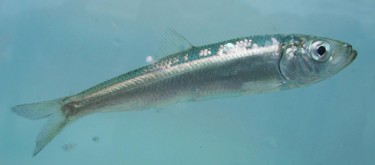
A new study by Tim Essington, Aquatic and Fishery Sciences, shows for the first time that fishing likely worsens population collapses in several species of forage fish, including herring, anchovies, and sardines. Some of the largest fisheries in the world target these species, which are also a key food source for larger marine animals like salmon, tuna, seabirds, and whales. Previously, it wasn’t known whether population collapses and other population shifts in forage fish were naturally-occurring or related to fishing. Essington’s study, published April 6 in the Proceedings of the National Academy of Sciences, connects fishing with the collapse of forage fish populations and recommends risk-based management tools that would track a fishery’s numbers and suspend fishing when necessary. A marine fellow with the Pew Charitable Trust, Essington and his team asked two questions when investigating the possible link between fisheries and stock collapses in forage fish: First, what was happening before and during the collapse? Second, do these collapses follow a pattern that would be expected as part of a natural cycle? They found collapses were much more common in real stocks than in simulations of natural, random fluctuations, leading them to conclude that fishing is likely a contributor to forage fish collapses. While forage fish eventually rebound, these collapses deprive other species of food and fisherman of income for as long as the population is depressed.
Read more at UW Today »
